- Quick Read
- Deep Read ( 6 Min. )
In Today’s Issue
- In West Bank, settler violence creating feel of a war zone
- Today’s news briefs
- Despite dip in election trust, Indians trek miles to cast their ballots
- On Columbine anniversary, a nation divided over guns
- Maasai women are told to stay home. But these rangers don’t.
- Doris Kearns Goodwin recalls 1960s idealism
Monitor Daily Podcast
- Follow us:
- Apple Podcasts
- Spotify
- RSS Feed
- Download
TODAY’S INTRO
‘The government is us’
 Mark Sappenfield
Mark Sappenfield
None of us should be shocked when Doris Kearns Goodwin says something profound. Reading Barbara Spindel’s Q&A today with one of America’s greatest historians is a must. At a moment when catastrophism is the dominant trend in political thought, it reminds us of the power and importance of context.
And therein lies wisdom. “The government is us,” she says. So a lack of trust in government is a “lack of trust in our own collective action as well.” By this measure, there is no enemy to defeat, no outcome to fear, only a bond of fellowship perpetually to rekindle.
Share this article
Link copied.

Help fund Monitor journalism for $11/ month
Already a subscriber? Login

Monitor journalism changes lives because we open that too-small box that most people think they live in. We believe news can and should expand a sense of identity and possibility beyond narrow conventional expectations.
Our work isn't possible without your support.
In West Bank, settler violence creating feel of a war zone
With the world focused on Iran and Gaza, Israeli settlers are stepping up attacks against Palestinian towns and villages in the West Bank. Feeling abandoned, many residents believe they should take matters into their own hands.

-
By Fatima AbdulKarim Special contributor
-
Taylor Luck Special correspondent
After years of scattered attacks, far-right Israeli settler violence this week enveloped the West Bank and struck larger towns and villages, killing four people, wounding dozens, and grinding life in the Palestinian territory to a halt.
The violence followed the disappearance and death of a 14-year-old settler. The Palestinian Authority warns it is struggling to keep the peace, and is calling for international intervention to prevent uncontrollable violence.
While settlers have harassed and attacked remote Bedouin communities for years, this week marked the first full-on assault against villages.
“This is a significant change, and the significant losses resulting from the attacks are alarming,” says Abdallah Abu Rahmah, whose organization tracks settler attacks.
Palestinians say the violence leaves them abandoned in a war zone, unable to defend themselves and disillusioned with the international community.
“We aren’t safe here, but at the same time we can’t stay silent and idle,” says Sarah al-Wadi, whose home was torched by settlers. “I don’t believe anyone is here to uphold our human rights or protect us,” she says. “I won’t wait for accountability. They want us off our lands, but we aren’t going anywhere.”
In West Bank, settler violence creating feel of a war zone

After years of scattered pinpoint attacks, Israeli settler violence this week enveloped the West Bank and struck larger communities.
From Nablus to Jericho to Bethlehem to the edge of Ramallah, deadly attacks by far-right settlers hit towns and villages, killing four Palestinians, wounding dozens, and grinding life in the West Bank to a halt.
The wave of violence, which followed the disappearance and death of a 14-year-old Israeli settler, a shepherd, comes as the Palestinian Authority warns it is struggling to keep the peace.
The PA is calling for international intervention to prevent a “collapse” of order and an uncontrollable spiral of violence.
Palestinians say the violence is leaving them feeling abandoned in a war zone, unable to defend themselves and disillusioned with what they say is an ineffective international community. Increasingly, many are convinced they must take matters into their own hands.
“We are exhausted,” says Sarah al-Wadi, whose two-story home in Qusra, outside Nablus, was torched by settlers on Saturday.
“What is left? What else can I do?” she asks, as she attempts to clean up the damage. “We aren’t safe here, but at the same time we can’t stay silent and idle. We are totally alone.”
Systematic increase
The latest violence followed the disappearance last week of the Israeli teen in the West Bank. His body was discovered Saturday. Israeli officials say his death is being investigated as a case of terrorism.
Residents and activists say the ensuing Israeli attacks appeared preplanned.
Settlers began the rampage last Friday in the morning, before the teenager’s body was found, overwhelming vulnerable Palestinian farming villages near illegal Israeli settlements.

While Israeli settlers for years have harassed and attacked relatively remote Bedouin communities, this week marked the first full-on assault on Palestinian villages.
“This is a significant change, and the significant losses resulting from the attacks are alarming,” says Abdallah Abu Rahmah, director-general of the Palestinian Wall and Colonization Resistance Commission – a semiofficial authority tasked with tracking West Bank settlement outposts and settler attacks.
Experts and activists link the increased violence in Palestinian villages and towns with the proliferation of illegal settler outposts on village outskirts. The new outposts connect existing outposts and larger settlements, effectively encircling West Bank towns and districts and cutting off main roads that connect much of the West Bank.
“They send their cattle to destroy people’s farms; then they arrive armed and escalate tensions,” says Ghaleb Mayadmeh, a municipal official in Aqraba, where a group of 50 settlers killed two people Monday, according to residents on the scene, in the second deadly attack on the village in a month. “They attack; we defend ourselves and get accused of violence.”
Role of illegal outposts
Most of the violent attacks come from relatively few settlements that are situated “with the clear objective to displace Palestinian communities and limit [individuals’] ability to move from one place to another,” according to Peace Now, an Israeli peace group.
With the international community’s attention turned to Iran and Gaza, Israeli watchdogs and international organizations say, settlers are stepping up their violence.
Hilltop outposts are being used as a “tool to ban Palestinians from using their lands and to instill fear and insecurity,” says Mauricio Lapchik, Peace Now’s external relations director.
Removing illegal outposts and ending the violence is essential to “avoid a new war front in the West Bank,” he warns.
Yet settlers’ encroachment on Palestinian farming towns and villages is increasing.
On Sunday, a small group of settlers near Al Auja, near Jericho, blocked residents from using the village’s water spring, on which dozens of households depend, residents say.
Since Hamas’ Oct. 7 attack on Israel, 16 West Bank Palestinians have been killed in 700 settler-led attacks, according to the United Nations. The attacks have uprooted seven entire communities and displaced people from 20 other communities, which are mainly Bedouin.

But now in towns and villages, as larger groups of residents seek to repel settlers, activists warn that casualties could rise. Some accuse the Israeli army of facilitating the attacks, though the army says soldiers have a duty to intervene to stop them.
“Settlers are armed, their children are armed, the army is with them, and the law is with them,” says Palestinian activist Aymen Ghareeb, who tracks settler attacks. “This is the most difficult phase we have ever faced.”
New cycle of violence?
There are growing concerns that Palestinian citizens may take matters into their own hands.
“Don’t we have a right to defend ourselves?” asks one Jordan Valley resident, who requested anonymity for security reasons. “The international community and American sanctions have failed us. It is clear that the only thing that can stop force is force.”
During this week’s attacks, as in the past, PA security services were nowhere to be seen, residents say.
PA officials stress their security services’ mandate is limited to maintaining civil peace, not to act as an army to defend Palestinians from external threats or to confront Israelis.
“If the Palestinian security forces wished to go into Al-Mughayer” during clashes, “they would require coordination with the Israelis, which would not be granted under the current circumstances,” says senior Fatah official Mounir Jaghoub.
PA security officials warn that the increasingly deadly friction between Palestinians and far-right settlers is threatening an outbreak of a new, unpredictable cycle of violence, which they say they would have no way of stopping.
“The dangers posed by confrontations between the [Palestinian] public and settlers may lead to a total collapse” of the situation, says Talal Dweikat, PA security forces spokesperson. “The international community must act to hold perpetrators accountable for their actions and prevent escalation.”

On Tuesday, the Office of the U.N. High Commissioner for Human Rights urged “all states with influence to do everything in their power” to halt “rising violence and targeted attacks in the West Bank,” which it called a “matter of grave concern.”
“Israel, as the occupying power, must take all measures in its power to restore, and ensure, as far as possible, public order and safety in the occupied West Bank,” the rights body said.
“The Israeli security forces must immediately end their active participation in and support for settler attacks on Palestinians,” the statement added. “Israeli authorities must instead prevent further attacks, including by bringing those responsible to account.”
Soldiers’ actions scrutinized
Residents in Aqraba say Israeli forces were on the scene of the settler attack Monday, but as of Thursday, no settlers had been arrested.
“Due to the IDF [Israel Defense Forces] constant presence in the area, the soldiers encounter incidents of violations of the law by Israelis, some may be violent incidents or incidents directed at Palestinians or their property,” the IDF said in a statement to the Monitor. “In these cases, the soldiers are required to act to stop the violation and, if necessary, to delay or detain the suspects until the police arrive at the scene.”
“In situations where soldiers fail to adhere to IDF orders, the incidents are thoroughly reviewed, and disciplinary actions are implemented accordingly.”
Separately, Israeli Defense Minister Yoav Gallant signed an administrative arrest warrant this week for a 16-year-old Jerusalem resident suspected of being involved in recent settler violence.
On Friday, the Biden administration announced its third round of sanctions on far-right Israeli settlers and groups, which included prominent activist Bentzi Gopstein, while the European Union sanctioned four settlers and the far-right Lehava organization.
Palestinians on the front lines of the violence say the international community’s condemnations, warnings, and alarms are of little help.
“I don’t believe anyone is here to uphold our human rights or protect us,” says a defiant Mrs. Al-Wadi in Qusra. “I won’t wait for accountability. They want us off our lands, but we aren’t going anywhere.”

Today’s news briefs
• Ukraine aid advances: The U.S. House of Representatives pushes a $95 billion national security aid package for Ukraine, Israel, and other allies closer to passage.
• New Title IX rules: The Education Department issues new Title IX regulations, which protect the rights of LGBTQ+ students by federal law and offer victims of campus sexual assault new safeguards.
• Iran sanctions: The United States announces new sanctions on Iran targeting its unmanned aerial vehicle production after its attack on Israel on April 13-14.
• Palestinian state vote: The United States stops the United Nations from recognizing a Palestinian state by casting a veto in the Security Council.

Despite dip in election trust, Indians trek miles to cast their ballots
New concerns about the integrity of India’s elections are bubbling up to the surface. But as the world’s largest election gets underway, an enduring faith in the power of each vote is still driving people to the polls.

- Quick Read
- Deep Read ( 5 Min. )
As India kicks off its high-stakes general election, the integrity of its electoral process is being called into question.
Nearly a billion people are eligible to vote in monthlong elections that began Friday. They will send 543 members to India’s Parliament, and determine whether Prime Minister Narendra Modi and his Bharatiya Janata Party will win a third term in office.
But at the same time, opposition leaders are challenging the authenticity of votes cast via electronic voting machines, and trust in the Election Commission of India is dropping amid allegations of pro-government bias. A prepoll survey found that 28% of people trust the commission to a “great extent,” down from 51% of respondents in 2019.
Still, these apprehensions have not seemed to deter political participation, as voters from all political backgrounds flocked to the polls.
“I don’t want to waste my vote,” says Mohammad Rafiq Sheikh, who cast his ballot at a school-turned-polling center in the northern Indian town of Ramban this morning. “Even one vote can decide a winner.”
Despite dip in election trust, Indians trek miles to cast their ballots

Mohammad Rafiq Sheikh took his time casting his ballot this morning in the northern Indian town of Ramban.
After pressing the button for his party on the electronic voting machine (EVM), he carefully waited to hear the machine’s beep tone, and then to see the correct party symbol appear on screen, before leaving the government school-turned-polling station.
“I don’t want to waste my vote,” says Mr. Sheikh, waiting for his 10 family members to file out of the building. “Even one vote can decide a winner.”
They are some of the first people to vote in India’s massive, high-stakes election. Nearly a billion voters are expected to flock to the polls over the next month to elect 543 members to India’s Parliament – and determine whether Prime Minister Narendra Modi and his Bharatiya Janata Party (BJP) will win a third term in office. This is despite growing mistrust of the Election Commission of India (ECI) and concerns about the authenticity of votes cast via EVMs. Indeed, for a country grappling with a democratic backslide, the enduring faith in India’s electoral system is a point of hope.
Mohan Guruswamy, a political analyst and the chairman of the New Delhi-based think tank Centre for Policy Analysis, says that India’s election process may not be perfect, but it’s fairly foolproof, and still has buy-in from voters of all backgrounds.
“It reflects the mandate and will of the people quite accurately,” he says. “There is a proper process of counting votes, and if you have doubts about the results as a candidate, you can get the votes physically checked on demand.”
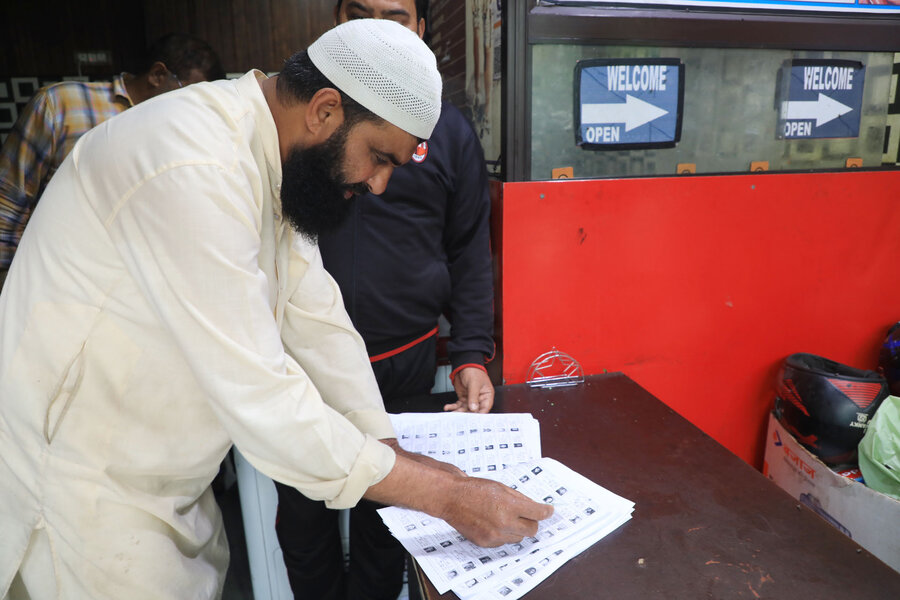
“Impossible to subvert”?
Approximately 50 countries are slated to hold elections this year. But in some, including the United States and Pakistan, public confidence in the electoral process is declining, undermined by various factors, from misinformation on social media to censorship of opposition voices.
Across the border, in Pakistan, an abrupt pause in polling results during the February election sparked allegations of brazen rigging by the country’s powerful military. Supporters of imprisoned former Prime Minister Imran Khan took to the streets to protest.
But Mr. Guruswamy maintains that India’s election system is less vulnerable to overt manipulation.
“In Pakistan, you have got the military sitting with bayonets and bullets deciding what to do. In India, you have millions of officials conducting the elections, so it is impossible to subvert, as election machinery is so big,” he says. “It has become an unimaginative trend and habit to paint everything rigged.”
Yet Indian voters’ trust in the elections has also declined over the past five years, according to a prepoll survey conducted by the Lokniti program at the Centre for the Study of Developing Societies (CSDS) in Delhi. It found that ahead of the 2019 elections, 51% of participants trusted the ECI to a “great extent,” but now that number has dwindled to 28%.
Sudheendra Kulkarni, former adviser to the prime minister during the 1999-2004 BJP government, says this is the first time in Indian electoral history that the credibility of the ECI has been called into question.
“The commission appears to be exhibiting bias,” he says, noting its failure to stop the BJP’s use of polarizing topics, such as religion, to garner votes – something that is prohibited in the ECI’s campaign guidelines.
Mr. Kulkarni further highlights changes to the ECI appointment process. The selection committee previously comprised the sitting prime minister, a Cabinet minister, a leader from the opposition, and the nation’s chief justice. The latter was removed by a new law last December, creating suspicion about the process by giving a majority to the ruling party.
There’s concern brewing around the use of voting machines as well, with 45% of the CSDS-Lokniti survey respondents saying that manipulation of EVMs by the ruling party is “somewhat” or “highly” likely.
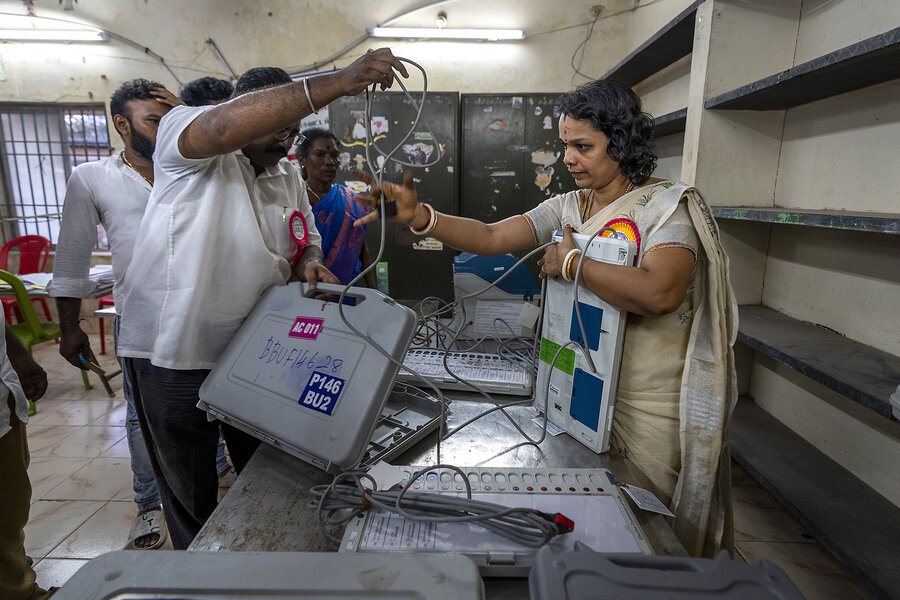
The importance of trust
India swapped paper ballots for EVMs in 2004 for logistical ease and to prevent voter fraud.
But a coalition of over two dozen opposition political parties, known as I.N.D.I.A., has been questioning the authenticity of the machines throughout its campaign.
India National Congress party’s Rahul Gandhi, the de facto leader of I.N.D.I.A., stated that Mr. Modi can’t win without EVMs.
“We requested the Election Commission to show us the EVMs and allow our experts to examine them, but they refused,” Mr. Gandhi said during a public rally last month.
The Supreme Court of India is currently deliberating on the matter, entertaining petitions advocating for the cross-verification of all votes cast on EVMs with paper slips generated through the voter-verified paper audit trail system. Currently, paper verification is mandatory only in five randomly selected polling stations per constituency.
Acknowledging the paramount importance of voter trust and the integrity of the electoral mechanism, the court deliberated on potential remedies and the need for stringent punitive measures to stop any fraud. The court reserved its judgment on Thursday, but did note that every year, “the percentage of people who have been voting has grown,” suggesting that concerns about the election process are not hindering political participation.
On the ground in the Udhampur constituency, that appears to hold true.
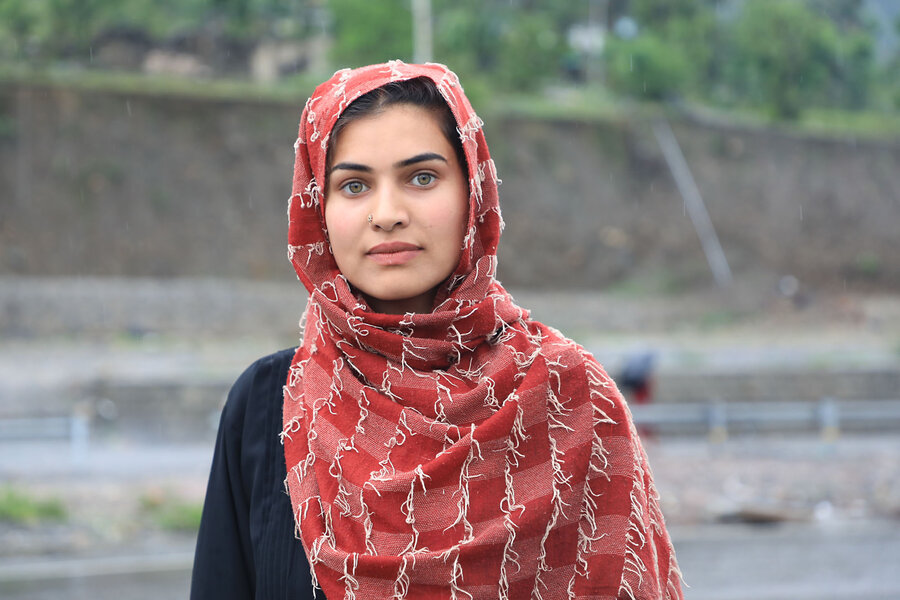
First-time voter Sumaiya Bano Mir, who teaches at a seminary in Chanderkote village, was jubilant after casting her first ballot.
“I want people’s needs to be fulfilled. We live in a village without a road. Even though the BJP has been doing well, our family always votes for the Congress party, so I did the same,” says Ms. Mir, while expressing her faith in the election process. “We are hopeful that our votes will help Congress come in power.”
Sore loser phenomenon
Experts note that allegations of voter fraud – credible or otherwise – often come from the losing party. This was the case in Pakistan, and in the United States, when former President Donald Trump refused to accept the results of the 2020 election, leading to the Jan. 6 riot.
But in India, Mr. Modi – a populist leader who could easily mobilize supporters in protest of an election result – is extremely popular, and broadly expected to win a third term. His backers, including Billo Devi in Dhalwas village, aren’t concerned about EVMs or ECI conduct.
“We have got everything because of the BJP,” says Ms. Devi, who walked 90 minutes to cast her vote. “My family received 120,000 rupees [$1,438] for construction of our house with the help of Modi’s [welfare] schemes. We are now hoping to get free ration too.”

On Columbine anniversary, a nation divided over guns
It’s been 25 years since the Columbine High School shooting. Americans continue to square off over the interplay of guns, safety, and health – with a trust gap hindering compromise.
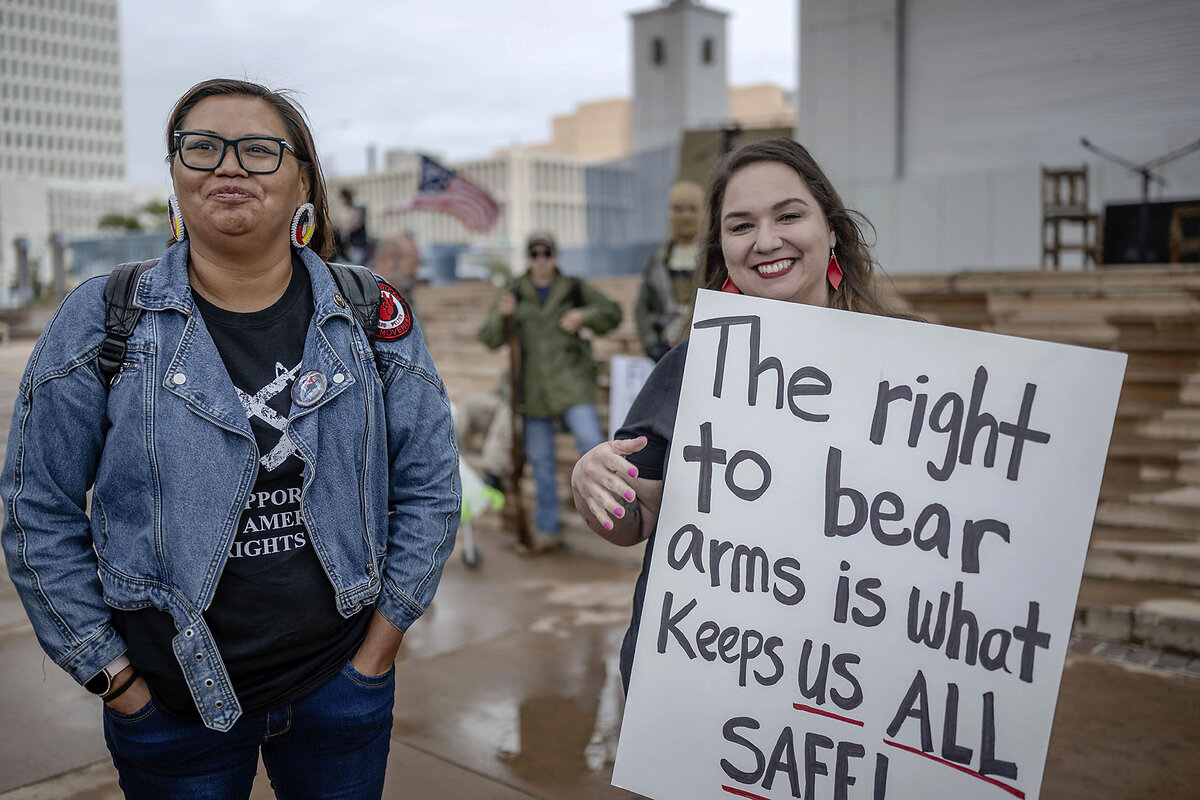
- Quick Read
- Deep Read ( 7 Min. )
A quarter century after the Columbine, Colorado, school shooting shook the nation, America is as awash in guns as ever, and as divided over them, too.
In Kennesaw, Georgia, household gun ownership is mandatory by law. When Johnny Downs’ wife frets about possible crime, he tells her not to worry. “I tell her, ‘OK, I’ll go dust off the bullets,’” he says.
As Second Amendment gun rights protections have grown stronger, Georgia is among a growing number of states that have moved to allow permitless carry for lawful owners.
Some Americans increasingly view the constitutional “right to bear arms” as blanket permission to use guns without interference. Others want more regulation. A record 45% now say they are “very dissatisfied with the nation’s gun laws,” a peak in 24 years of Gallup polling on the issue.
There have been moments of compromise, mostly after tragedies. In 2022, Congress passed the Bipartisan Safer Communities Act after the Uvalde, Texas, school shooting. On Thursday, Maine enacted sweeping gun control reforms. Yet stark divides remain.
“There is so much distrust, so much suspicion,” says Caroline Light, author of “Stand Your Ground.”
On Columbine anniversary, a nation divided over guns
A quarter century after a tragic school shooting in Columbine, Colorado, shook the nation, America is as awash in guns as ever, and as divided over them, too.
Here in Kennesaw, Georgia, owning guns is literally a rite of citizenship.
When Johnny Downs’ wife frets about possible societal unrest and crime, he tells her, don’t worry. “I have quite the arsenal myself,” says Mr. Downs, a retiree. “I tell her, ‘OK, I’ll go dust off the bullets.’”
Kennesaw is one of only a few towns in the United States where gun ownership is mandatory for every household by law. And as Second Amendment gun rights protections have grown stronger over the past two decades, Georgia is among a growing number of states that have moved to allow permitless carry for lawful owners. Even in Hartsfield-Jackson Atlanta International Airport, the world’s busiest, travelers are in a free-to-carry zone until they enter security checkpoints.
The trends here are just one sign of a nation divided over the issue of guns.
On the one hand, some Americans increasingly view the constitutional “right to bear arms” as blanket permission to own and use guns without interference. The total number of firearms in private hands has surged in recent years, though the share of households owning guns has hovered lower in recent decades than in the 1960s, judging by Gallup polling. A rising share of owners say gun purchases are motivated by personal safety concerns, rather than by more traditional uses like hunting.
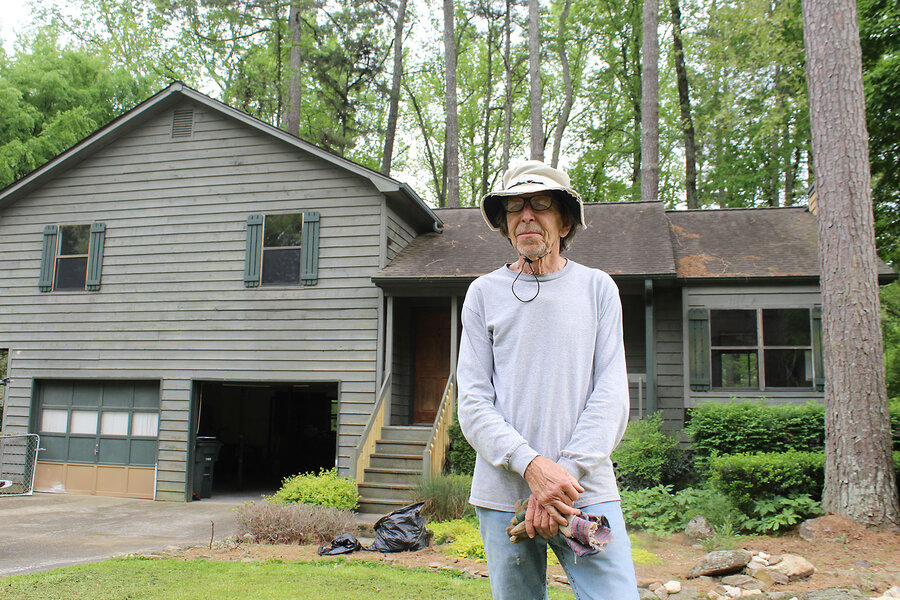
On the other hand, many Americans indicate more faith in a culture of gun regulation than in proliferation. A record 45% now say they are “very dissatisfied with the nation’s gun laws,” a peak in 24 years of Gallup polling on the issue. And U.S. adults are far more likely to want more restrictions on guns (56% as of last year) than fewer (12%).
Seeking common ground after tragedies
One reason is that gun tragedies – especially those that occur in schools like the one in Columbine 25 years ago this week that left 12 students and one teacher dead – strike hard at the national psyche. Even higher death tolls have since occurred in school shootings in Newtown, Connecticut, (2012) and Uvalde, Texas (2022).
Add in the trend of polarization over politics in general, and society’s navigation of gun issues isn’t just about trust in – or fear of – firearms. It’s also about public and private tensions over how to manage them.

Pew Research Center
“There is so much distrust, so much suspicion,” says Caroline Light, author of “Stand Your Ground: A History of America’s Love Affair with Lethal Self-Defense.”
“There are a lot of good people who are gun owners who are terrified that liberal governance is going to steal their guns,” says Dr. Light. Meanwhile “our society has aligned itself behind this belief ... that firearms are an essential tool of self-defense rather than something specifically designed for human destruction.”
Sometimes it is in the wake of tragedies when common ground is sought.
After the 2018 Parkland, Florida, high school shooting, numerous states, including Florida and others with Republican governors, passed gun safety legislation. Red flag laws have spread, barring gun access for certain individuals due to public safety risks.
After Uvalde, Congress passed the Bipartisan Safer Communities Act, boosting background checks for gun purchasers under 21 years old, and taking other steps that made it the most consequential federal gun safety legislation in nearly three decades.
And on Thursday, Maine enacted sweeping gun control reforms – including criminalizing some gun sales – six months after a mass shooting in Lewiston.
If there are glimmers of how trust gaps might be bridged, stark divides remain.
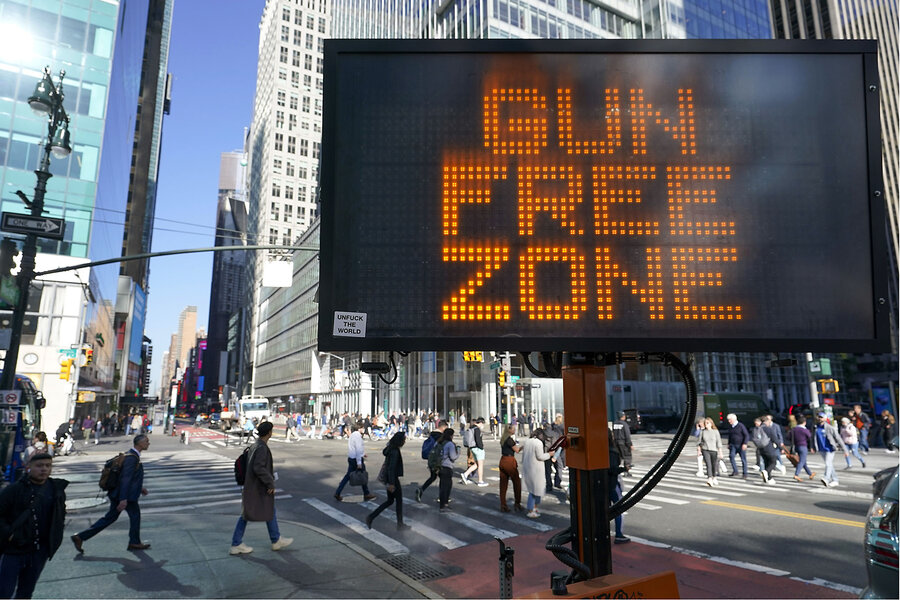
A tale of two states, and their gun laws
Few places illustrate the loggerheads over guns as well as Illinois and Georgia. Yet their similarities are as telling as their differences.
One is a Southern state with a rich firearms tradition. The other is a Midwestern one, where villages like Gurnee have long had a gun regulation mindset.
Earlier this month, concern about gun safety surfaced in Gurnee in an unusual way: Two men in ski masks and cinched hoodies walked into a popular diner holding pistols at their sides. The brunch crowd gasped.
“There was panic and concern,” says Gurnee Police Detective Shawn Gaylor. A concealed-carry permit holder started to draw his weapon to take protective action. “That’s when one of the servers realized they were water guns. They were able to stop something that could have been horrifying from happening.”
Behind the incident was an innocent-enough but perhaps tone-deaf college student game called Senior Assassins.
“We’re not saying they can’t have fun, but they need to think about what they’re doing and how it affects others in the community,” says Detective Gaylor.
Both Gurnee, Illinois, and Kennesaw, back in Georgia, have about 30,000 people. Both are major metro area suburbs. And despite different gun law climates, both have crime rates well below national averages – a reminder that public safety is about more than gun laws.
In Gurnee, Detective Gaylor’s department now holds regular training on firearm threat responses. The department also holds a “parent university” to help families with guns keep them safely locked up.
“We’re addressing the threat of somebody taking action against our community,” she says. “That’s the reality of the world that we live in now. And everybody is on heightened alert because of that.”
Debating statistics and safety laws
Still, scholars haven’t settled the question of whether a rise in the sheer number of guns – legal and illegal – means more violence. Robert VerBruggen, a fellow at the conservative Manhattan Institute, concluded in a 2022 report that the evidence for now is hard to call. Gun death rates are down since the 1990s, but higher than in the 1950s.
Gun safety laws have a clearer track record, some experts say. States with tighter regulations around gun ownership tend to have lower rates of gun deaths.
But Mr. VerBruggen says that, depending on one’s ideology, statistics can be shaped to confirm partisan talking points.
“Both sides have gotten so distrustful of each other that the policy debates are now about scoring points instead of saving lives and figuring out what’s going to work,” he says.
Those suspicions have become pervasive. “There are a lot of people walking around carrying guns to restaurants, and then there are parents who say they want to home-school their children because they are not safe at school anymore,” says Miami University historian Lindsay Shackenback Regele, author of “Flowers, Guns and Money.”
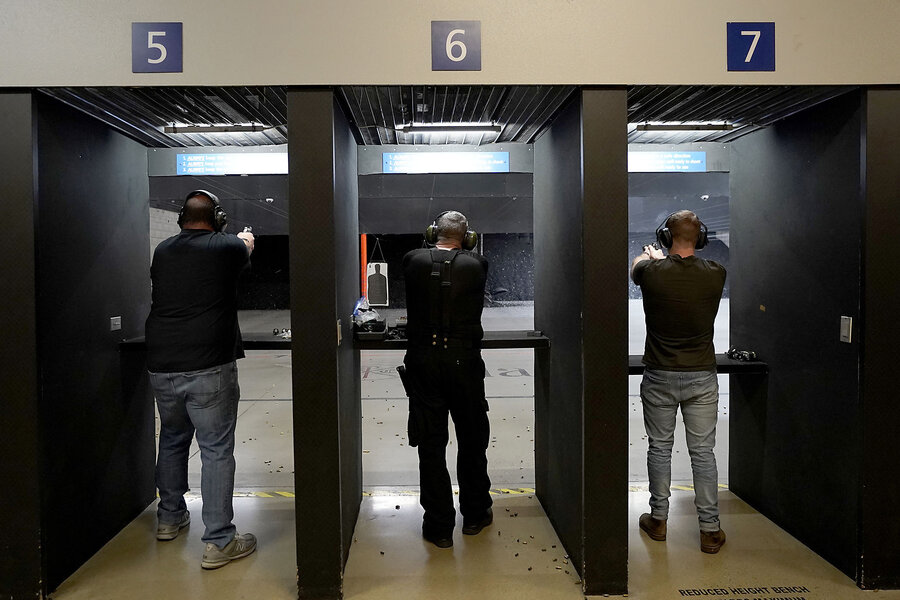
Some of the patterns have deep historical roots. Justin A. Joyce, a culture expert at Washington University in St. Louis and author of “Gunslinger Justice,” cites the influence of westward expansion and advances in gun technology as reasons behind an evolving ethos of “my property, my liberty, and all the rest be damned.”
But these days, Dr. Joyce says he is sensing “the barest seedling of a shift ... toward ... seeing [gun policy] as an issue of national health.”
Over time, research itself could become one foundation for building common ground across divides.
Jennifer Tucker, a historian and ballistics researcher at Wesleyan University, sees the health effects going beyond fatalities to include mental and psychological impacts.
“We can do better”
“I think we can do better in terms of understanding what would be needed to reduce not just fatalities and injuries, but also to understand the kinds of nonmonetary, nonbodily impacts that [gun proliferation and lethality] has on a society consumed by fear,” says Professor Tucker, founding director of the Center for the Study of Guns and Society.
For years after it was passed in 1982, the gun ownership mandate was all the buzz in Kennesaw, a town known for its Civil War history. But today, Kennesaw is a hipster enclave of Atlanta with coworking spaces near a Confederate relic shop.
Mr. Downs estimates that on his street, perhaps a third of the households have weapons. Many people have no idea that they are required. No one has ever received a citation.
Mr. Downs credits police, not the gun law, for low crime rates. As for himself, he says, “I like to live quietly and mind my own business.”
When he sits down on the sofa at the end of the day, he turns on the TV to find it almost always on his wife’s favorite station, which churns a steady stream of news.
He is more nostalgic. Most nights, the lifelong gun owner turns the channel to reruns of Mayberry, starring Andy Griffith, the “sheriff without a gun.”

Pew Research Center

Maasai women are told to stay home. But these rangers don’t.
Globally, the vast majority of park rangers are men. But one gritty, determined group of female rangers in Kenya is shattering stereotypes and showcasing the particular skills that women bring to wildlife conservation.
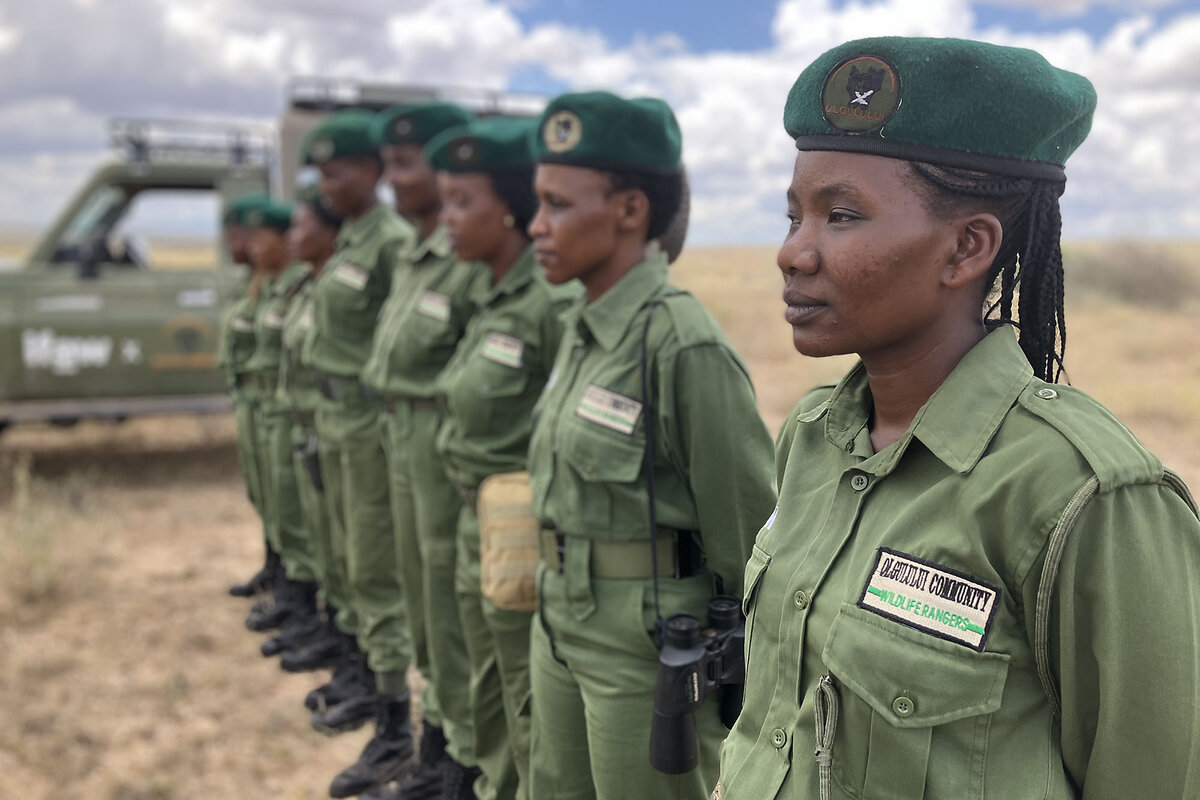
- Quick Read
- Deep Read ( 5 Min. )
-
By Lenny Rashid Ruvaga Contributor
There is a gender problem in conservation. Simply put, there aren’t many women working as rangers, the job on the front line of protecting the world’s wildlife. In fact, women account for only 3% to 11% of all rangers globally.
But that is slowly changing. In southern Kenya, an all-woman ranger unit called Team Lioness is challenging stereotypes and helping conservation efforts there reach a wider audience. Drawn from local Maasai communities near Amboseli National Park, the women are pushing back against long-held ideas about women’s work.
“I beam with joy when I hear [young Maasai girls] say, ‘I want to be like Ranger Lakara,’” says Purity Lakara, the commander of Team Lioness. “It means that they see us as role models.”
Since Team Lioness was founded in 2019, it has also become known for its compassionate communication style, which has helped reach Maasai herders who were previously wary of park authorities. Many Maasai felt rangers wanted to protect animals at all cost but didn’t care when those animals harmed people, such as when herders’ cattle were snatched by marauding lions.
Now, however, “the community has grown to trust them,” says Jackson Sitonik, warden of the Olgulului Community Wildlife Rangers, of which Team Lioness forms a part.
Maasai women are told to stay home. But these rangers don’t.
The breakthrough was a bottle of water.
For three days, wildlife ranger Everlyne Merishi had been embedded with a group of Maasai morans, or hunters. It was mid-2023, and they were searching for lions that had killed several of their cattle near this national park at the foot of Mount Kilimanjaro. For the Maasai, cows are sacred and considered members of their families. The men wanted vengeance.
Mrs. Merishi understood that feeling, because she is Maasai herself. That is also why she was convinced there could be a less destructive solution.
The group had already walked about 25 miles that day when members stopped, exhausted, for a break. Mrs. Merishi and her team began to pass around bottles of water. As the hunters drank, their faces softened and they mustered weak smiles.
Mrs. Merishi remembers walking over to a group where one of the leaders sat.
“I told them that I understood their pain and that an injustice had occurred, but I promised that we would ensure that the authorities would relocate these two lions,” she says.
Mrs. Merishi is part of an all-woman ranger unit working on Maasai lands near Amboseli National Park in southern Kenya. That’s rare: Globally, women account for only 3% to 11% of all park rangers. Team Lioness, as the Kenyan unit is known, was formed in 2019, part of a worldwide movement to increase those numbers.

These efforts are important, experts say, because they challenge stereotypes – but also because they help conservation efforts reach a wider audience. In the Amboseli area, for instance, the Lionesses have been particularly effective among the ranger teams at connecting with locals like the Maasai.
“It’s astonishing to see the incredibly positive ripple effect of employing women from local communities and the benefits on their lives and their communities at large,” says Holly Budge, the founder of World Female Ranger Week and a longtime advocate for women in wildlife protection.
Challenging tradition
The sun is barely peeking over the savanna each morning when Mrs. Merishi and her fellow rangers lace up their sneakers and head out for a 2-mile jog near their base. As they run, they chant a running series of jokes.
“Cold water,” one ranger shouts, a reference to the only thing coming out of the taps at their base camp.
“I ain’t bathing, I ain’t bathing,” the others repeat.
Lack of hot water aside, the commander of Team Lioness, Sgt. Purity Lakara, has dreamed of this life since she was a child.
She grew up in a Maasai village approximately 30 miles from here. Her community placed heavy value on living in harmony with both animals and nature. And when she saw wildlife rangers patrolling the area, she was awed by the sense of authority they projected. There was one problem though: “They were all men,” she says.
Meanwhile, girls like her were expected to get married young and settle into a domestic life.
“The [Maasai] community is largely patriarchal and set in its ways,” says Rosemary Ntoipo, CEO of Girls’ Empowerment Program and Network, a nongovernmental organization in Tanzania that promotes the rights of Maasai women and girls. It is “quite the exception” for women to work outside the home, she says.
But Mrs. Lakara’s parents were determined that she should get an education, and her timing was fortuitous.

Proving their mettle
In 2013, Africa’s first all-woman ranger unit, the Black Mambas, was formed in South Africa, and others soon followed in countries such as Zimbabwe and Congo. Supporters of the trend argued that women were more approachable and were able to communicate more easily with other women in the communities where they worked.
The idea to form an all-woman ranger team in Amboseli came up in 2019. It was the brainchild of a female Maasai elder named Kirayian Katamboi and the International Fund for Animal Welfare, a global charity.
At the time, Mrs. Lakara had just finished high school. When village elders called a meeting to pitch the new ranger unit, “my heart leapt for joy,” she says. She became one of its founding members.
Today, Team Lioness is made up of 17 women, each of whom has completed a three-month training in ecology, first aid, and “bushcraft” – or the art of talking to people about conservation. They live for stretches of 21 days at a simple base camp with concrete floors and a sheet iron roof in the Olgulului-Ololorashi Group Ranch, as the Maasai land surrounding Amboseli National Park is known.
Each morning, the rangers patrol the surrounding area on foot, walking about 12 miles as they look for signs of poaching and survey the wildlife in the area.
The women are also responsible for managing occasional conflicts between locals and the animals, which usually flare up when lions or cheetahs from Amboseli cross into Maasai villages and kill cattle.
In the past, these situations often led to tensions between park rangers, who didn’t take kindly to attempts to kill the offending wildlife, and communities, who often felt authorities wanted to protect animals but didn’t care about the people they harmed.
However, the honest communication style of Team Lioness and other ranger units from Maasai communities has helped gain trust. They explain the law and people’s rights – like their right to be compensated for cattle killed by big cats from the park.
“The community has grown to trust them,” says Jackson Sitonik, warden of the Olgulului Community Wildlife Rangers, of which Team Lioness forms a part. “The rangers from Team Lioness have proven their mettle time and again.”
The rangers also give back to the community in other ways. In April 2022, they started a school outreach program where they hope to inspire students – particularly girls – to stay in school and pursue careers in conservation.
“I beam with joy when I hear the students say, ‘I want to be like Ranger Lakara or Ranger Merishi,’” Mrs. Lakara says. “It means that they see us as role models.”

Doris Kearns Goodwin recalls 1960s idealism
Doris Kearns Goodwin’s husband, Dick Goodwin, worked for President John F. Kennedy. She helped President Lyndon B. Johnson write his memoirs. Theirs was a marriage of deep respect and love, in the presence of history.
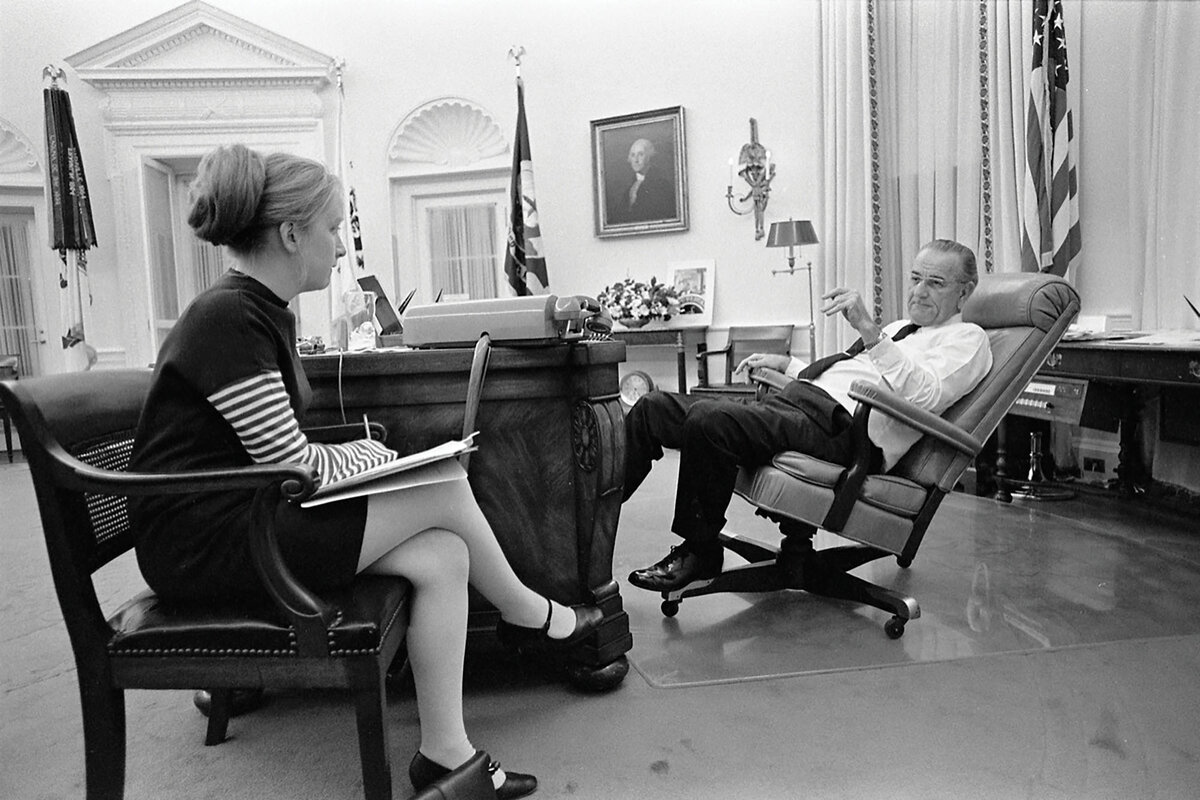
- Quick Read
- Deep Read ( 4 Min. )
-
By Barbara Spindel Contributor
Throughout their four decades together, historian Doris Kearns Goodwin and her husband, Dick Goodwin, sat at the elbows of presidents. Mr. Goodwin was a speechwriter and adviser to John F. Kennedy and, after his assassination, for Lyndon B. Johnson.
Mr. Goodwin always considered himself “a Kennedy man.” Ms. Goodwin was a confidant of LBJ, and helped him write his memoirs.
Their divided loyalties were “a recurring irritant in our marriage,” Ms. Goodwin writes in “An Unfinished Love Story: A Personal History of the 1960s.”
The book describes the project that consumed the couple in the years before Mr. Goodwin’s death in 2018. They combed through a vast trove of letters, diaries, and documents that he’d saved from his time working for JFK, LBJ, and Robert F. Kennedy.
In a recent interview, Ms. Goodwin speaks about what she called “the great adventure of our lives.”
Doris Kearns Goodwin recalls 1960s idealism
Pulitzer Prize-winning historian Doris Kearns Goodwin worked for Lyndon B. Johnson early in her career. First, as a 24-year-old graduate student at Harvard, she won a spot in the prestigious White House Fellows program. Then, after Johnson’s presidency, she helped him draft his memoirs.
Ms. Goodwin’s husband, Dick Goodwin, worked for President Johnson as an aide and speechwriter; he coined the term “Great Society” to describe LBJ’s domestic agenda. But Mr. Goodwin had worked for John F. Kennedy first, and he always considered himself a Kennedy man.
Their divided loyalties were “a recurring irritant in our marriage,” Ms. Goodwin writes in “An Unfinished Love Story: A Personal History of the 1960s.” The book describes the project that consumed the couple in the years before Mr. Goodwin’s death in 2018. They combed through a vast trove of letters, diaries, and documents that he’d saved from his time working for JFK, LBJ, and Robert F. Kennedy. Ms. Goodwin recently spoke with Monitor about what she called “the great adventure of our lives.”
How did the book come about?
After he turned 80, Dick announced that it was time to open the 300 boxes that had traveled with us for almost 50 years. He’d been reluctant to explore them because of the way the ’60s had ended so sadly in terms of Martin Luther King’s and Bobby’s assassinations, the riots, the anti-war violence. But he said, “If I have any wisdom to dispense, I’d better start dispensing now.”

What was your husband most proud of?
Dick’s proudest moments were working on voting rights with LBJ. I loved hearing about what it was like for him to help write the [March 15, 1965, speech to Congress on voting rights]. I was listening to that speech when I was in graduate school. I could never have imagined that three years later I’d be working for the man who delivered the speech and 10 years later I’d marry the man who helped write it.

You had remarkable experiences as a young person. What stands out to you?
One would be the March on Washington. That was the first time I felt that sense of being part of something larger than myself. I was going to be studying international relations, and I got a Fulbright [scholarship] to go to Paris and Brussels. But there was too much happening in America. I decided to stay here and go to graduate school. Then, in the summer of ’65, I was an intern in my congressman’s office when all the Great Society legislation was passing. It was so exciting – we’d go out and celebrate every time one of the bills passed. After that, the experience of going to work for Johnson, helping him on his memoirs, is what made me a presidential historian. Only when you look back do you see that those are the turning points. At the time you don’t know exactly where you’re going.
President Johnson wanted you to live on his ranch full time after his presidency to help with his memoirs. Why did you insist on only being there half time?
Unlike a lot of presidents, with LBJ you’re part of his family when you work for him, so it’s more than just leaving a boss – it’s leaving someone you’ve been intertwined with, who has enormous charisma and hold on you. I would say to myself, “Why am I not going [full time]?” Here’s a man who’s president, and I’m going to be studying the presidency. I had an extraordinary sense of comfort at the ranch. But I had a feeling, and I think Dick did too, that you need to have some independence from [LBJ].
How did your time at LBJ’s ranch affect your career?
I’m so glad I went. To be part of the daily activities ... it was pretty exciting. It became a foundational part of my career because my first book [“Lyndon Johnson and the American Dream” in 1976] was based in large part on our conversations. It led to my wanting to feel empathetic toward the people I wrote about, not judging them from the outside in.

The Johnson administration’s deceptions over Vietnam led to a loss of trust not only in the president but also in government itself, which was tragic considering the early accomplishments of his administration. Do you see a connection between that period and today’s distrust of government?
The credibility problem that developed over the war in Vietnam was one of those markers when trust started diminishing, followed by [President Richard] Nixon and Watergate and all the things that happened after that. But the government is us, so it means the lack of trust in our own collective action as well. Maybe even more important than trusting the current people in government is trusting that you as the people have the capacity to change things.
The ’60s are often remembered for violence and social turmoil. What else should we recall about the era?
It was a time when young people in particular felt they could make a difference. The Freedom Rides, the sit-ins, the marches – they changed the public sentiment of the country. People are saying now that we shouldn’t be looking at dark times, it’s not good for our young people, but the dark times also contain, as the ’60s did, extraordinary light. The country changed enormously for the better.
Other headline stories we’re watching
(Get live updates throughout the day.)The Monitor's View
Holy days during unholy wars
- Quick Read
- Deep Read ( 2 Min. )
-
By the Monitor's Editorial Board
Despite nearly seven months of war between Hamas and Israel, both Jews and Muslims living in Israel have not forgotten their religious celebrations – and the meaning attached to them by prayer and ritual. On Monday, Jews begin the seven-day celebration of Passover. In early April, Israeli citizens who are Arab Muslims ended the monthlong Islamic observance of Ramadan. These days of spiritual introspection, in their own ways, may be contributing to peace.
Israeli Arabs, who represent about a fifth of the country’s population, have been remarkably supportive of Israel during the war. More than half told a pollster that the Oct. 7 attack by Hamas does not reflect their values or those of Islam.
The relative lack of violence between Israeli Jews and Arabs does not make much news. Yet the peace “is a cause for hope that religious faith may henceforth play an enhanced role in ending the horrible warfare presently ravaging a land sacred to all the Children of Abraham,” wrote Marc Schneier, president of the Foundation for Ethnic Understanding. Despite the tensions of war, the power of prayer, fasting, and even togetherness may be making a difference.
Holy days during unholy wars
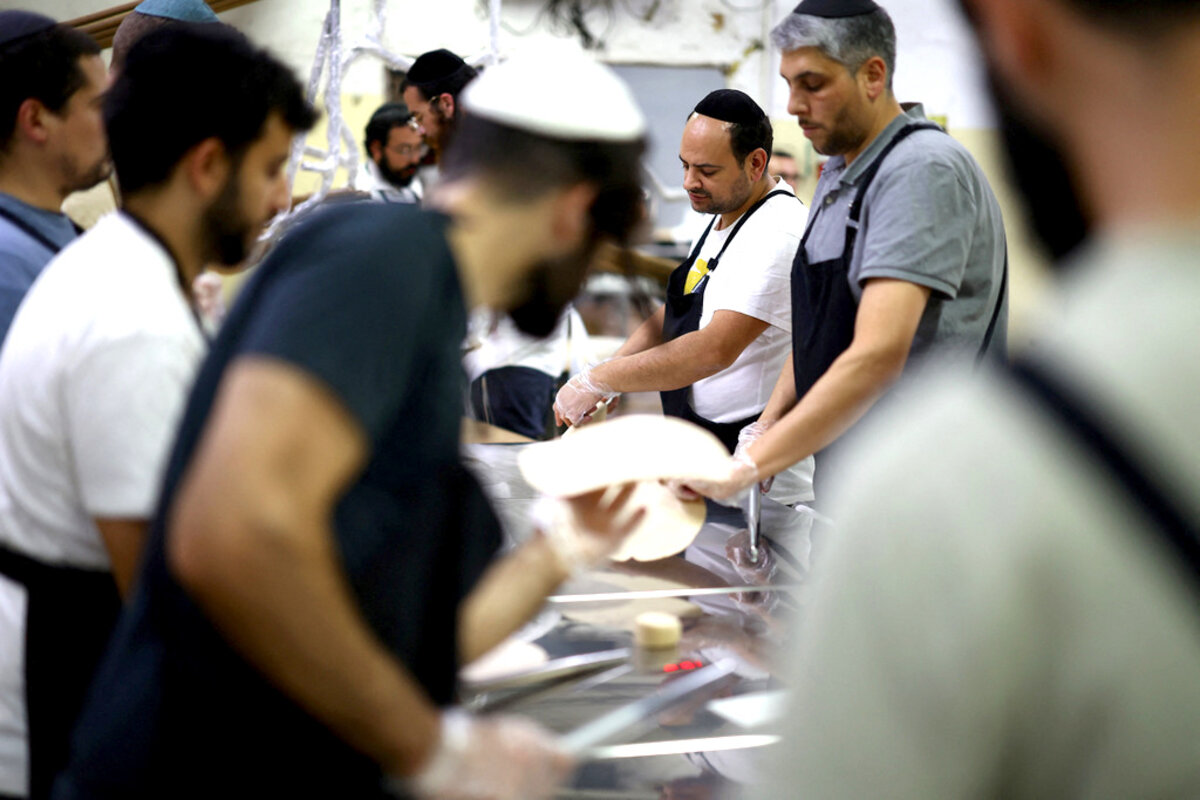
Despite nearly seven months of war between Hamas and Israel, and lately attacks between Iran and Israel, both Jews and Muslims living in Israel have not forgotten their religious holidays – and the meaning attached to them by prayer and ritual.
On Monday, Jews begin the seven-day celebration of Passover. In early April, Israeli citizens who are Arab Muslims ended the monthlong Islamic observance of Ramadan. These days of spiritual introspection, in their own ways, may be contributing to peace.
Israeli Arabs, who represent about a fifth of the country’s population, have been remarkably supportive of Israel during the war. More than half told a pollster that the Oct. 7 attack by Hamas does not reflect their values or those of Islam. And while they worry about the plight of Palestinians in Gaza, nearly two-thirds believe Hamas bears a great deal of responsibility. At the end of Ramadan, some 120,000 Muslim worshippers from both Israel and the West Bank prayed peacefully at the Al-Aqsa Mosque in Jerusalem – despite calls by Hamas for violence.
For decades, many Israeli Muslims and Jews invited each other to celebrate their respective celebrations. During this latest war in Gaza, however, such visits have been canceled or diminished. “The feeling is that everything is sensitive and complicated,” Ilanit Haramati, program manager at Shared Paths, an organization that conducts walking tours for Jews in Arab communities, told Haaretz.
Despite that, some Muslims still invited their Jewish neighbors to help them break the daily fasts of Ramadan. In early April, as Ramadan ended, Israeli President Isaac Herzog hosted Arab mayors for a dinner at his residence, asking them to “join hands together against hatred and extremism.”
“Even if it seems distant, difficult, and impossible, I believe that peace will come,” he said.
The relative lack of violence between Israeli Jews and Arabs does not make much news. Yet the peace “is a cause for hope that religious faith may henceforth play an enhanced role in ending the horrible warfare presently ravaging a land sacred to all the Children of Abraham,” wrote Marc Schneier, president of the Foundation for Ethnic Understanding, in The Jerusalem Post. Despite the tensions of war, the power of prayer, fasting, and even togetherness may be making a difference.

A Christian Science Perspective
Each weekday, the Monitor includes one clearly labeled religious article offering spiritual insight on contemporary issues, including the news. The publication – in its various forms – is produced for anyone who cares about the progress of the human endeavor around the world and seeks news reported with compassion, intelligence, and an essentially constructive lens. For many, that caring has religious roots. For many, it does not. The Monitor has always embraced both audiences. The Monitor is owned by a church – The First Church of Christ, Scientist, in Boston – whose founder was concerned with both the state of the world and the quality of available news.
Loving our brother, even when it’s not easy
- Quick Read
- Read or Listen ( 2 Min. )
Prayer can open wide horizons of comfort, boundless love, and healing.
Loving our brother, even when it’s not easy
Bullies, wrongdoers, adversaries – is the world filled with villains? Here’s what the Bible says: “God saw every thing that he had made, and, behold, it was very good” (Genesis 1:31).
Boy, can it feel hard to reconcile that statement with the evil we hear reported, or even experience firsthand. But there’s a spiritual perspective we can gain from the Bible that gives us a different view of the people around us. When we reason from the scriptural basis that everyone is made in the image of God, who is divine Love, it makes sense that we are all loving – that everyone is truly good.
The archives of The Christian Science Publishing Society, which publishes the Monitor, have many articles that show how each individual’s spiritual goodness is available for us to see and love. Here’s a selection of them.
When someone persistently mistreats us, turning to the goodness that truly identifies them helps transform the situation, as a group of eighth graders experienced in “Can prayer stop a bully?”
The author of “Healing pain with spiritual truth” needed to see that even controversial political leaders have to be viewed with spiritual love, not anger or hatred – and in doing that he found healing.
“The truth that sets us free to forgive” discusses how a recognition that God perfectly governs and blesses His spiritual creation, frees us to forgive without inhibition, and even restores a right relationship.
Even when there’s anger directed at us, we can let divine Love meet everyone’s need and show us the practicality of recognizing the present reality of spiritual harmony, “A deeper kindness” reveals.

Viewfinder
Stratospheric achievement

A look ahead
Thank you for joining us today, and we hope you have a lovely weekend. Among the stories we’re following for next week: A relative resurgence of the protest movement in Israel, President Joe Biden increasing his public visibility, and America’s trust in the Supreme Court.



